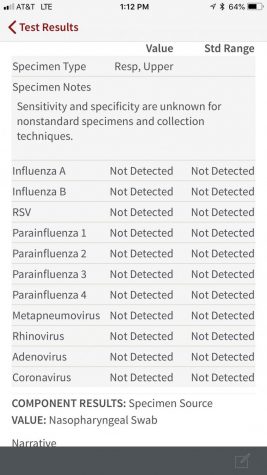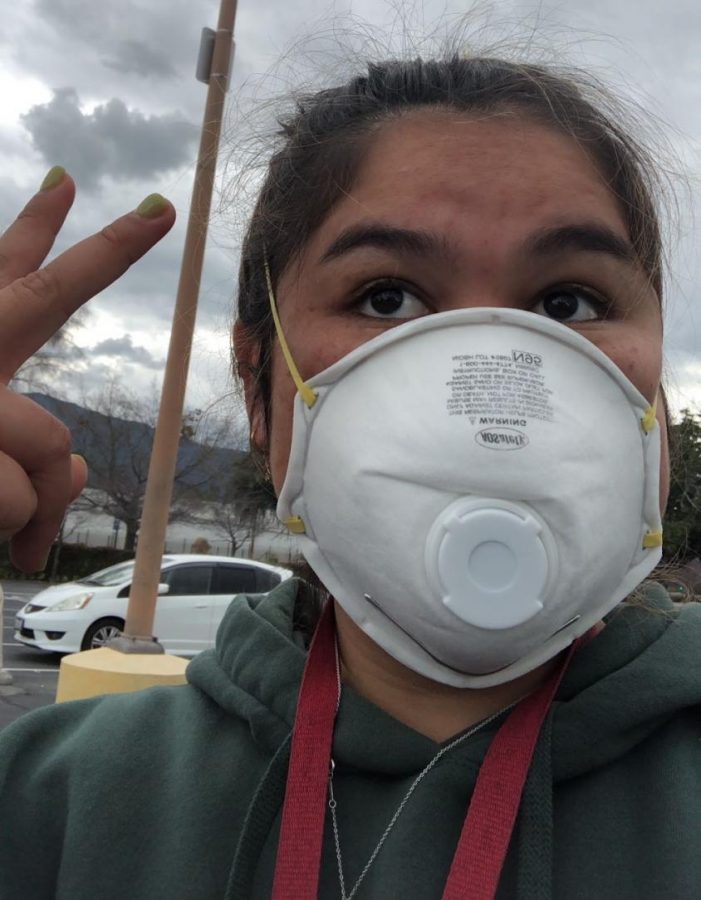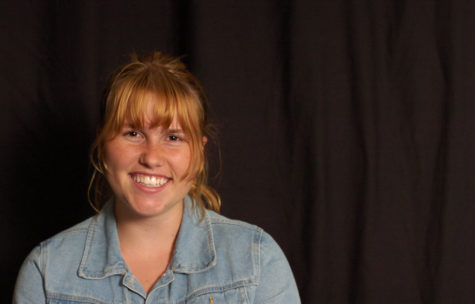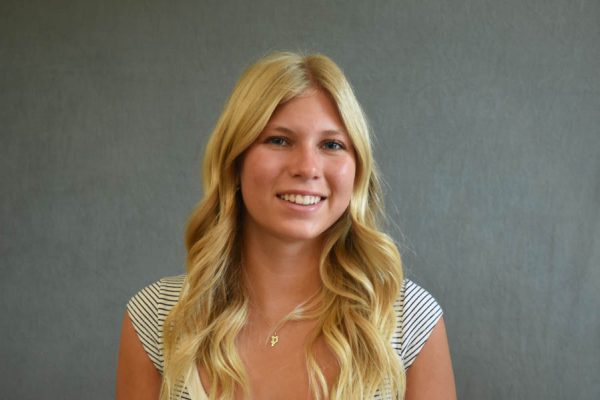An Alumna’s Journey With COVID-19
SJHHS alumni and current college sophomore Olivia Fu wears a mask soon after learning she contracted COVID-19. Due to a misleading label on her test results, she thought she had tested negative for the virus for three days before being informed that she was in fact positive.
April 1, 2020
SJHHS alumni and Stanford sophomore Olivia Fu’s journey with COVID-19 started with a minor sore throat. On Tuesday March 10, she woke up with an ache in her throat, then throughout the day she had the chills, a small bout of nausea, and some achy muscles.
After taking her temperature she discovered she didn’t have a fever, or the signature heavy dry cough that many people have when they contract COVID-19.
The next day she developed a seemingly insignificant cough, coughing only a few times a day.
“Those were pretty much all my symptoms. A sore throat, achy muscles, and a light cough,” said Fu.
Despite her extremely mild symptoms, she contacted her parents, and she decided to take steps to get tested. Stanford University had announced that they were moving to online school, and that all students should return home. She was concerned with the slight possibility of bringing the virus home to her family.
“My dad is the primary caretaker for my grandma who has stage IV lung cancer and is starting chemotherapy, and you can’t start chemo if you’re positive for the coronavirus. And then my mom also was planning on going to Chile in South America to take care of her dad who is also older and sick, and so they would be unable to do that if they had any interactions with me and I had coronavirus,” said Fu.
Due to the high volume of coronavirus-related calls, many testing sites require intensive screening before someone is cleared to get a test. Fu had to call three different numbers, and even had a video chat with a doctor about her symptoms before she was able to make a testing appointment.
“I also felt guilty in a way because I did have those symptoms, like I had the sore throat, I barely had a cough, and I did have the achy muscles, but I didn’t have a fever or anything so I felt like when I was talking to the doctors that I was kind of dramatizing it,” said Fu.
She was eventually screened and able to get tested at 4pm on Saturday March 14, four days after she started exhibiting symptoms.
“You literally just pull up in your car, it’s in this empty parking garage, and there are nurses decked out in full PPE gear (Personal Protection Equipment) and they have swabs. You lower your window, they stick it up your nose, and then you drive off,” said Fu.
She was told it was a 24 hour test, and would get a call if she tested positive. The next day she woke up and checked her patient portal, which displayed her repository panel, listing diseases such as influenza. At the bottom it was indicated that she was negative for the coronavirus, and she didn’t receive a call that day. She took this to mean she didn’t have the virus, and was free to go home.

This is the respiratory panel that was on Fu’s patient portal. It clearly indicates that coronavirus results came up negative.
On Monday, two days after her test and six days after her symptoms began, she drove home with her friend, an LA resident. There was snow on the Grapevine, a section of the 5 freeway, so they ended up spending the night in a hotel in Pasadena to avoid driving late into the night.
The next day she was passing near where her dad works, and stopped to get lunch with him. During the meal, she got a call from a nurse with the Stanford hospital, asking her how she was doing.
She hadn’t had symptoms for a few days, so she told the nurse she was feeling good and was just going to follow the government recommendations of staying home. The nurse quickly grew concerned and corrected her, saying she was positive, and then called the hospital to double check. When she called Fu back, and confirmed, Fu was in shock.
“I was standing up, and I literally squatted in the restaurant because I just was just like ‘you’re kidding me, what do you mean I tested positive it literally said negative,’” said Fu.
As it turned out, the coronavirus that was indicated as negative on the respiratory panel on her patient portal was actually the seasonal coronavirus that causes the common cold. This is a frustrating and potentially dangerous false negative.
By not clarifying that the “coronavirus” in the respiratory panel is not the novel coronavirus that is causing the pandemic, as well as not calling her within 24 hours like they said they would if she were positive, the system made Fu believe and act like she was negative from Sunday March 15 until Tuesday March 17. During this time she could’ve been contagious and potentially spreading the virus.
After her phone call with the nurse, her COVID-19 results were put on her portal.
“The test says SARS-CoV-2 and then in quotation marks ‘2019 Novel Coronavirus,’ so I just thought ‘even you guys are calling it coronavirus, and I’m expected to just know this?’ And a part of it is I was so eager to just get those results and to see that I was negative, and I had checked it multiple times, so I wasn’t totally thinking critically because I had that mindset going in,” said Fu.
Many students and faculty raised this concern to the university, so they modified the system to make it more clear.
“I know they’ve changed it. Now they’re saying it’ll take 2-3 days to get your results because one of my friends who lives in the area who I had shared pie with went in to get tested because he was having symptoms and they told him 3 days and they deleted coronavirus from the respiratory panel so, they fixed it,” said Fu.
After learning she tested positive, Fu immediately returned home and started self-isolating in her room. Her parents stayed elsewhere due to their contact with their elderly parents. She wasn’t able to leave her room for six days, and had her siblings leave food outside of her door.
“[I watched] lots of Youtube and TikTok, and finished a book I was reading. That was pretty much it. I was asleep for most of the day so that helped pass time,” said Fu.
While she officially no longer has COVID-19, she plans to continue to follow the California government’s “Stay at Home” directive, and advises others to do the same.
“Definitely take it seriously…Stay at home literally means stay at home, not stay at home at the park. I think a lot of people haven’t fully processed the transition from this idea of social distancing, where we’re just keeping away and not hanging out in big groups to the new thing that we have to do, which is literally stay at your house,” said Fu.
After experiencing COVID-19 firsthand, and witnessing it in her school community, Fu is concerned about both the far reaching effects that are becoming visible around the country, and peoples’ apathy and ignorance towards the disease.
“Stay at home. You can spread it without knowing it because the symptoms are so light, and you can also just not have symptoms. It can so easily be really dangerous to a lot of people. You don’t want to overwhelm the healthcare system,” said Fu.




